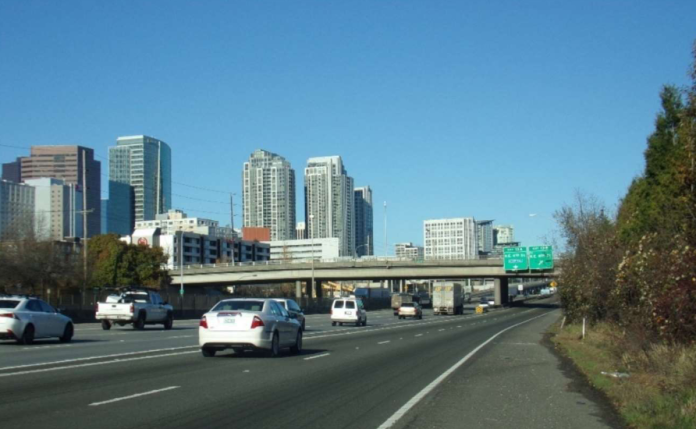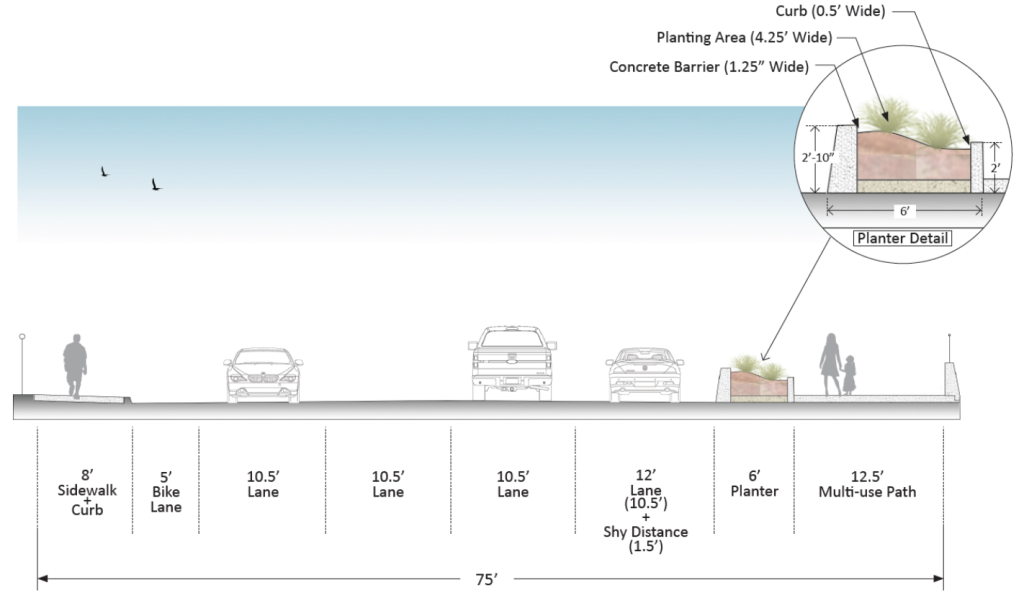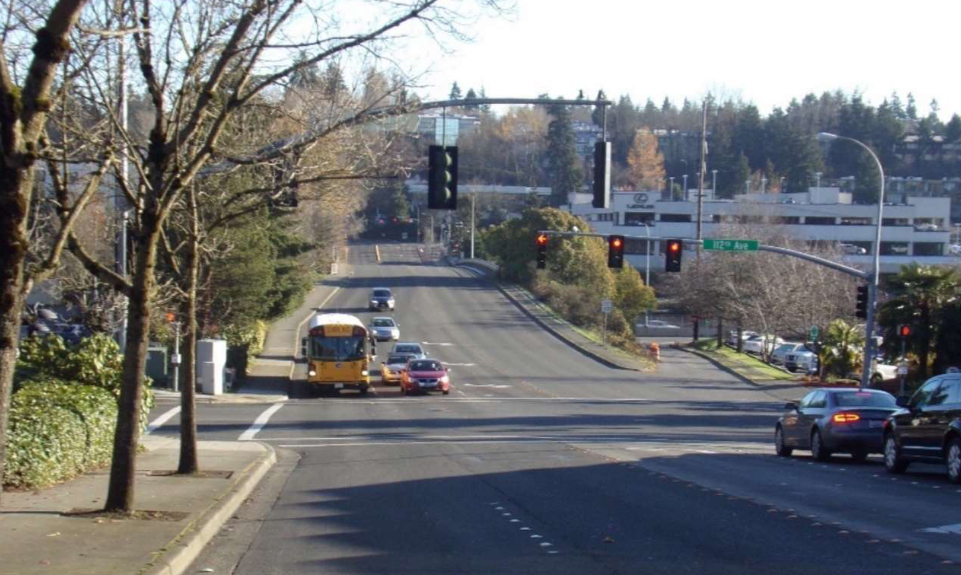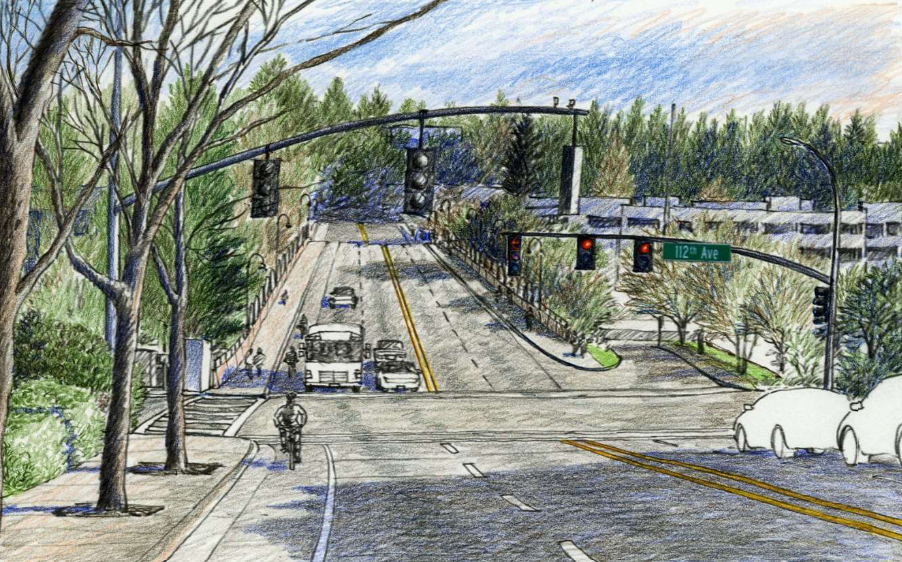
UPDATE (07/05/2022) This article was updated with newly-released renderings from WSDOT of the replacement bridge and new figures for the width of the multipurpose path.
People getting around Downtown Bellevue will have to reckon with some road closures in the near future. Main Street bridge will be closed to all road users starting as early as Monday, June 13, leaving only five crossings over the I-405 chasm between I-90 and SR 520. The bridge will remain completely closed to drivers for five months, but people walking, biking, and rolling will need to wait an additional two months before they can use the bridge again, according to a blogpost from the Washington State Department of Transportation (WSDOT).
The agency is demolishing and rebuilding the bridge to accommodate the extension of I-405’s Express Toll Lanes south to Renton. The freeway widening project will cost state taxpayers $705 million to add at least one travel lane in each direction. Although WSDOT has touted the multimodal elements of the project, such as providing additional capacity for upcoming bus rapid transit (BRT) on the corridor, these lanes (as well as additional auxiliary lanes planned for southbound general purpose traffic) will still be open to private, single-occupancy vehicles and are therefore likely to increase traffic in the long run.
Demolition of the bridge will force a short closure of I-405 itself later this month. Beginning at 10 p.m. Friday, June 17 and ending at 5 a.m. Monday, June 20, drivers traveling on the interstate in Downtown Bellevue will be required to detour onto 112th Avenue NE or 116th Avenue NE between NE 4th Street and SE 8th Street.

Work around the bridge was originally slated to begin back in March, but the concrete drivers’ strike forced a change of plans. WSDOT expects the single weekend closure of I-405 to be sufficient to support the bridge rebuild, but in a January meeting with Bellevue City Council, the agency confirmed that some overnight lane closures will follow. For cars wanting to travel on the bridge itself, the initial five-month closure will be followed by a two-month period with only one lane of vehicle traffic allowed in each direction. As mentioned, pedestrian and bicycle facilities will still be closed during this time, requiring people walking and biking to continue to use detours of NE 4th Street or SE 8th Street.

When the bridge fully opens to them though, people walking and biking will see improved facilities that better connect to the surrounding area. The current narrow sidewalks will be replaced with a 12.5-foot multipurpose path on the south side and an eight-foot sidewalk on the north side, with an additional five-foot bike lane on the north side for westbound cyclists. However, the road will still have at least four lanes for automobile traffic, and renderings suggest the bike lane will not be protected.


The new multipurpose path will serve as a new connection for the Lake to Lake Trail, but the trail infrastructure it connects to remains meager. To the west, the long-fought Main Street bike lanes are still immediately next to (and sometimes in between) vehicle traffic without protection. To the east, “trail” riders must contend with a five-lane road with no shoulders and passing a freeway off-ramp before they get to ride alongside Bellevue’s fastest roadway, which was also the site of a recent serious-injury collision.
Still, the multipurpose path on the new bridge will be a marked improvement over the current facilities. Main Street’s path will help extend the walkshed of the upcoming East Main light rail station into south Wilburton, an area about to get a major rezone for more housing. And even if there’s still gaps, the path will make it easier for people to connect with future Eastrail improvements. But given Bellevue’s bold vision for a more multimodal growth corridor, there was room for WSDOT to go bolder — though perhaps it’s better for the agency to wait for Bellevue’s surrounding streets to catch up.

Chris Randels is the founder and director of Complete Streets Bellevue, an advocacy organization looking to make it easier for people to get around Bellevue without a car. Chris lived in the Lake Hills neighborhood for nearly a decade and cares about reducing emissions and improving safety in the Eastside's largest city.


